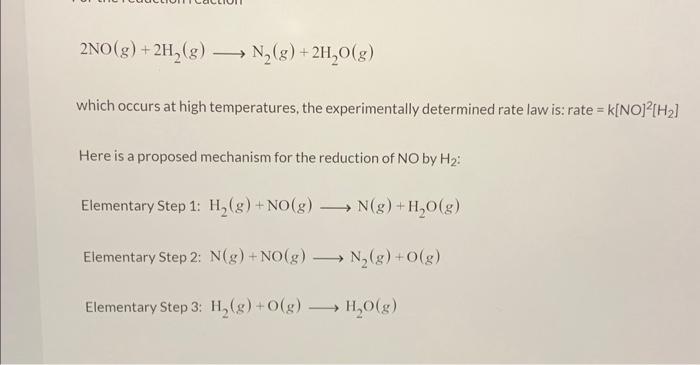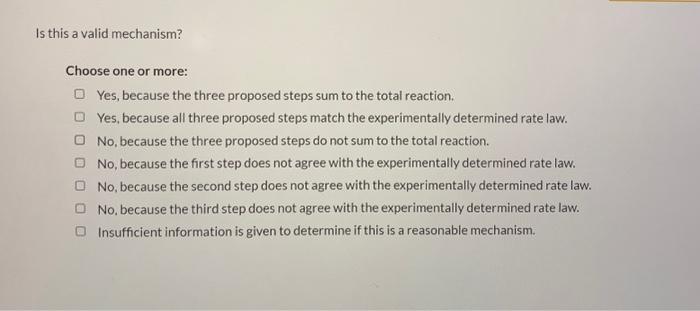Answered step by step
Verified Expert Solution
Question
1 Approved Answer
2NO(g)+2H2(g)N2(g)+2H2O(g) which occurs at high temperatures, the experimentally determined rate law is: rate =k[NO2[H2] Here is a proposed mechanism for the reduction of NObyH2 :


Step by Step Solution
There are 3 Steps involved in it
Step: 1

Get Instant Access to Expert-Tailored Solutions
See step-by-step solutions with expert insights and AI powered tools for academic success
Step: 2

Step: 3

Ace Your Homework with AI
Get the answers you need in no time with our AI-driven, step-by-step assistance
Get Started


